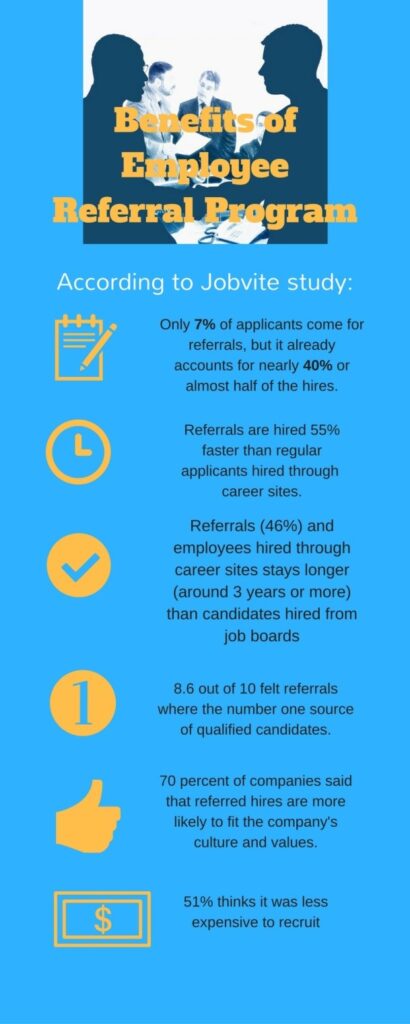The final interview is a pivotal moment to land your dream opportunity. It's…
Benefits of Employee Referral Program and How to Optimize Them
There are a lot of ways to source out candidates. There are job postings, career sites, and job fairs. But there is one method that is making a trend these days – Employee Referral Programs.
Employee Referral Programs or ERPs is a type of recruitment method which involves encouraging and rewarding current employees for referring qualified candidates for employment.
The infographic below can briefly explain some of the benefits of ERPs:
To summarize, ERPs makes recruitment easier, convenient and time/money saving. Why?
First, referrals are already prescreened by your current employees.
Your employees already know the ins and outs of your organization and they can gauge that with the credentials and background of a potential candidate. Of course, they wouldn’t refer this candidate if they feel that he or she is not suited to the kind of working environment that you have in your company. This will also cut down the recruitment process because the candidate is immediately introduced to the recruiter through the employee.
Second, they will work hard so that they will not let the person who referred them down. Some job seekers pass their CVs to their network hoping that they can be referred by a friend to their bosses or an open vacancy. Once they are referred, they will do their best to get hired as a sign of gratitude to the person who referred them.
Third, ERPs are a great source of passive candidates. Sometimes, the most qualified talent is already hired by another organization. That could be the main reason they stayed with the company for 5-10 years. It could be that they work so well, they are rewarded generously. We can tap passive candidates through ERPs. Once a close friend explained to a passive candidate how much they can adapt and grow to your organization, it would be easier for you to convince them to move to your company.
Lastly, referred candidates are most likely to stay for a long time. As mentioned in the infographic above, since they are already pre-screened to see if they are suited to the kind of culture and environment that you have in your organization, they can fit in easily and will stay in your company longer than candidates hired through career sites.
Of course, ERPs will not be successful if you will not optimize them appropriately. According to Inc.com, there are 3 ways to effectively optimize Employee Referral Programs:
- Document them – You have to ensure that all processes, procedures, and expectations are documented to avoid any surprises. You also have to adhere to the terms that you have set to ensure that the programs are fair and credible.
- Expand them – Do not limit the program to the employees. You should also consider rewarding outsiders for referring a candidate. For example, in Philippine BPOs, they are giving at least 2,000 pesos (40 US$) for every referral hired and additional 2,000 pesos for every referral who stayed with the company for 6 months.
- Leverage them – Use software that can manage your ERPs. Choose the one that could network with your employees and enables you to post open and closed positions within your company. In this way, you can easily update your employees about the latest job vacancy and, at the same time, monitor your top or least performers.
The bottom line is to have an effective program that works and to provide appropriate rewards to motivate your employees. Cash rewards can draw attention, but there are times that employees are content to receive other things like an all-expense trip, free smartphone, and others. It is undeniable that open communication with your recruitment team and your employees are a must for more fruitful ERPs.




